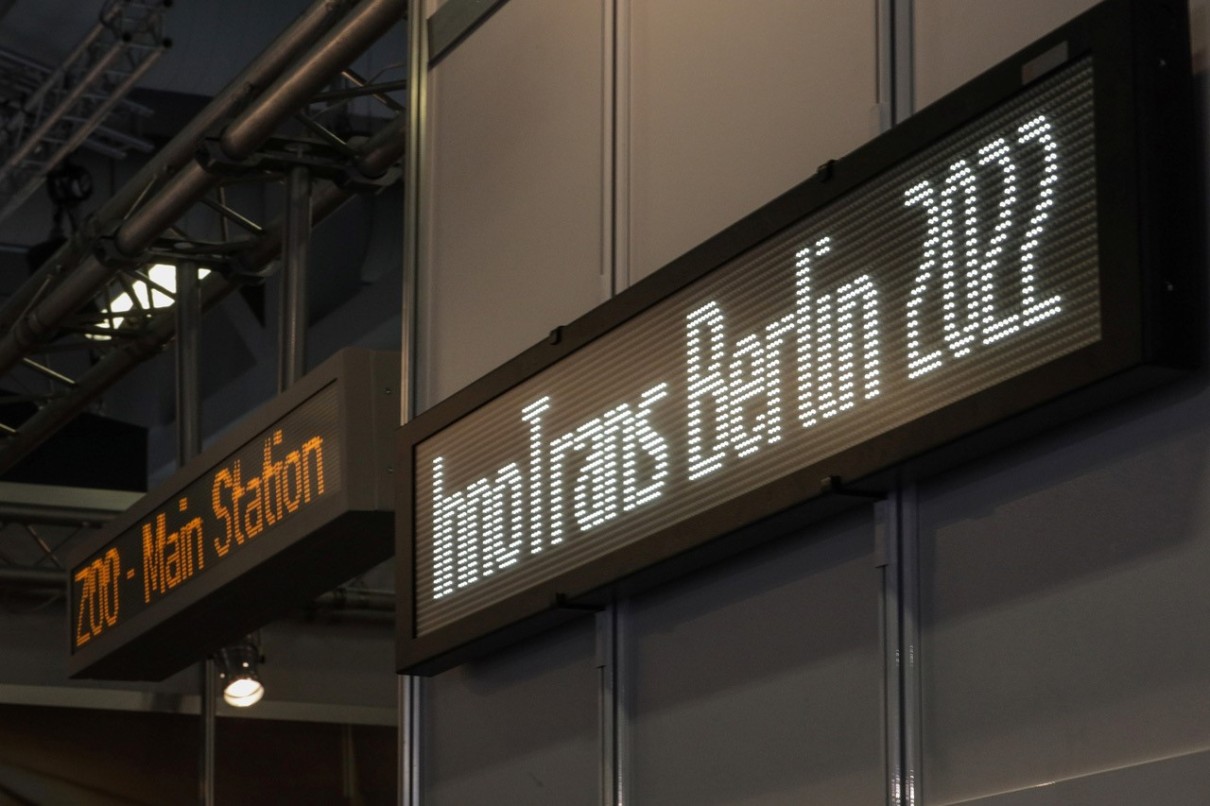Page content
A huge boost for digitalisation in the rail industry
“Post InnoTrans – what trends and challenges are we seeing in the rail sector?“ At the RailVoice webinar, a group of experts examined topics such as preventive maintenance, optimising processing chains and the sector’s openness towards new players.
Events have taken a huge step forward. That was the unanimous view of all the experts discussing InnoTrans 2022 and the trends and challenges in the rail sector at the RailVoice webinar. In addition to Helmut Hohenbichler from the organisers Boom Software AG, the moderator Nikolas Schmölz (tetraversity media GmbH) had also invited Claudia Skerbinz (Siemens Mobility Austria GmbH), Christian Kühnast (DB Cargo AG), Florian Geishofer (ÖBB-Produktion GmbH) and Dr. Martin Zsifkovits to the event. The innovation director of Molinari Rail GmbH addressed something that had struck him during InnoTrans 2022: “I believe the wider public has finally become aware of digitalisation and the potential it has”, he said. Whereas in previous years the tendency was to discuss whether digitalisation was still worth it for some assets, current thinking now leaned towards retrofitting fleets for maximum returns rather than waiting for them to be written off.
“A quantum leap took place between the second to last and last InnoTrans“, said Helmut Hohenbichler from Boom Rail Solutions, who has been following developments at the leading trade fair for transport technology for over 30 years. Exhibitors and rail transport companies had both put these last few years to good use and driven a convergence of processes, including digitalisation. “If something positive can be said about the pandemic, it is that there is now considerable openness and acceptance regarding digitalisation and a departure from traditional structures“, he said.
Startups with creative ideas
Claudia Skerbinz was pleasantly surprised by the many new players, particularly in software and IT: “It is so important to see the rail sector and IT interacting, along with new creative people and companies“, said the head of Portfolio Unit Passenger Coaches at Siemens Mobility Austria GmbH.
Christian Kühnast from DB Cargo also remarked on the many startups who saw an opportunity to challenge the market and disrupt and reshape processes. The senior digital project manager who first visited InnoTrans ten years ago was particularly pleased with how inspirational the trade show was. “One could spend weeks at InnoTrans. There are so many products for the rail environment that one never really thinks about“, he said. “It is fascinating to get this chance to think outside the box and imagine how problems might be solved differently.“
Digitalisation as a way of supporting preventive maintenance
Together, the participants discussed various types of fuels, optimising processing chains, maintenance processes and life cycles. How to optimise vehicle operations? How to incorporate energy-saving measures? “The primary aim is, as in aviation, for a vehicle to either be in operation transporting passengers, or undergoing maintenance or cleaning“, said Florian Geishofer, head of Lean Performance and Performance Management at ÖBB-Produktion GmbH. For that reason, everything surrounding operations had to be well planned, along with preventive maintenance measures. Christian Kühnast shared his vision of making optimum use of data to anticipate vehicle outages. He imagined a scenario “similar to a Formula One pit stop, where everything is ready and waiting to put a locomotive back into service so it can make money.“
Industry standards support compatible data
In this context, the quality of data is of great importance. As a manufacturer, Claudia Skerbinz supported closer cooperation with operators, in order to be able to adapt the data collected to customers’ needs: “We can produce massive amounts of data and we need digital applications“, she said. “However, this has to make sense so that we can connect the data and processes.“
All the participants thought industry standards and simplification made sense. “It will be hard to make data compatible if everyone installs their own sensors producing different data“, said Christian Kühnast. “We have rail companies with a large fleet from numerous vehicle manufacturers which produce only partially compatible data“, said Helmut Hohenbichler. “That is something that needs to be considered from the start when issuing a call for tender, so that we can compile information that produces qualified feedback.”


